About Ann Arbor Connected Vehicle Test Environment (AACVTE)
Connected vehicle technology shows great promise in transforming the way consumers travel. Thanks to wireless technology, connected vehicles ranging from cars to trucks and buses to pedestrians could one day be able to communicate important safety and mobility information to one another and the infrastructure in order to prevent injuries, ease traffic congestion, improve the environment, and save lives!
In 2012, UMTRI and the U.S. DOT launched the Safety Pilot Model Deployment (SPMD), a $30 million research project to assess the effectiveness of connected vehicle safety technology at reducing crashes. The project spanned three years and incorporated over 2,800 vehicles and 73 lane-miles of instrumented roadway. The Safety Pilot study was a tremendous success, thanks in large part to the community of volunteers from Ann Arbor and the surrounding area!
Building on the success of SPMD, UMTRI and its partners have expanded the existing infrastructure footprint from northeast Ann Arbor to the entire 27-square miles of the City of Ann Arbor – from 25 roadside units to 75! The infrastructure installations are at intersections, curves, pedestrian crosswalks, and even one roundabout. In addition to the roadside units, over 2,500 connected vehicles have been outfitted with state-of-the art connected vehicle technology. This new deployment is called the Ann Arbor Connected Vehicle Test Environment (AACVTE).
The AACVTE is the world’s largest operational, real-world deployment of connected vehicles and connected infrastructure. Led by UMTRI, and its partners, it is the standard for a nation-wide implementation. AACVTE is a stepping-stone to achieving the U.S. DOT’s vision for a national deployment of connected vehicles and infrastructure.

The goals of the AACVTE:
- Transition from a model deployment to an early operational deployment.
- Continue to operate a robust, high quality environment for the benefit and use of all stakeholders.
- Transition from a federally funded program to an economically sustainable environment.
